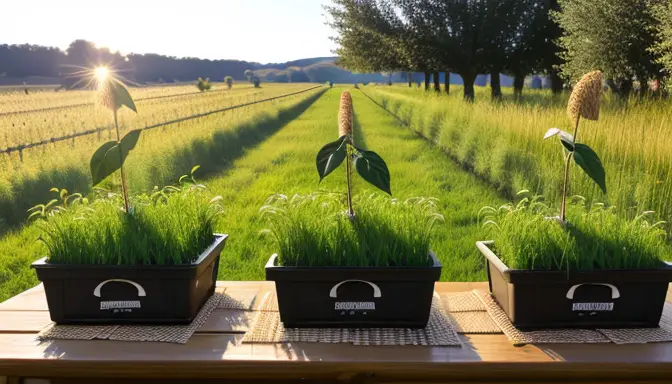Planting orchard grass is a rewarding endeavor that can bring a burst of life and vitality to your pasture. This versatile forage crop offers a plethora of benefits, from its high nutritional value to its palatability for livestock. By understanding the ideal soil conditions, planting methods, and maintenance practices, you can ensure a flourishing orchard grass stand that will provide long-term benefits for your pasture.
When it comes to soil preparation, orchard grass thrives in well-drained soil with the right pH and fertility levels. By taking the time to properly prepare the soil, you set the stage for successful establishment and growth of this valuable forage crop. Whether you choose to broadcast the seeds or drill them into the ground, timing is crucial to ensure optimal germination and a healthy stand of orchard grass.
Seed selection plays a vital role in the success of your orchard grass stand.
Additionally, understanding the different varieties available can help you choose the best option for your specific needs and conditions.Opting for high-quality seeds with good purity and germination rates is essential for long-term productivity..
Establishing and maintaining a healthy orchard grass stand requires attention to detail, from proper fertilization to effective weed control. By implementing sound practices, you can promote vigorous growth and ensure the longevity of your pasture. Harvesting orchard grass at the right time and utilizing proper storage methods are key to maximizing its nutritional value for hay or grazing.
Despite your best efforts, you may encounter common issues when planting orchard grass, such as pests, diseases, or environmental stressors. By being proactive and implementing effective solutions, you can address these challenges and safeguard the health and productivity of your orchard grass stand.
Benefits of Orchard Grass
When it comes to the benefits of planting orchard grass, the advantages are truly bountiful. Let’s dive into why this forage crop is a top choice for pasture management.
First and foremost, orchard grass boasts a high nutritional value, making it an excellent choice for livestock feed. Its rich content of proteins and fibers provides essential nutrients for the animals, promoting their health and well-being.
Additionally, orchard grass is known for its exceptional palatability among livestock. The grass is eagerly consumed by animals due to its tender and tasty nature, ensuring they receive the necessary nourishment without hesitation.
Furthermore, orchard grass exhibits excellent regrowth potential, allowing for multiple harvests throughout the growing season. This characteristic not only ensures a continuous food supply for the animals but also contributes to the longevity and sustainability of the pasture.
Soil Preparation and Conditions
When it comes to planting orchard grass, soil preparation and conditions play a crucial role in the success of your forage crop. Before diving into the planting process, it’s essential to ensure that your soil is in optimal condition. Here are some key factors to consider:
- Soil pH: Orchard grass thrives in slightly acidic to neutral soil with a pH range of 6.0 to 7.0. Test your soil and amend it if necessary to achieve the ideal pH level for optimal growth.
- Drainage: Good drainage is essential to prevent waterlogging, which can hinder the growth of orchard grass. Ensure proper drainage to avoid water accumulation in the root zone.
- Fertility: Orchard grass requires fertile soil with adequate levels of nitrogen, phosphorus, and potassium. Conduct a soil test to determine nutrient deficiencies and apply fertilizers accordingly.
By addressing these soil conditions and preparing your land accordingly, you can create a favorable environment for planting orchard grass and ensure the healthy establishment of your forage crop. Remember, a strong foundation leads to a thriving orchard grass stand that will benefit your pasture for years to come.



